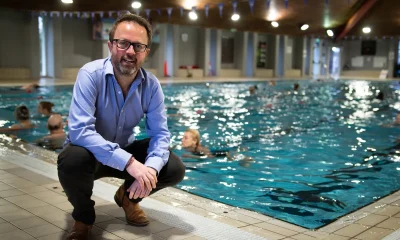Safety
Lifeguard Shortage May Cause Half of Public Pools To Close Early
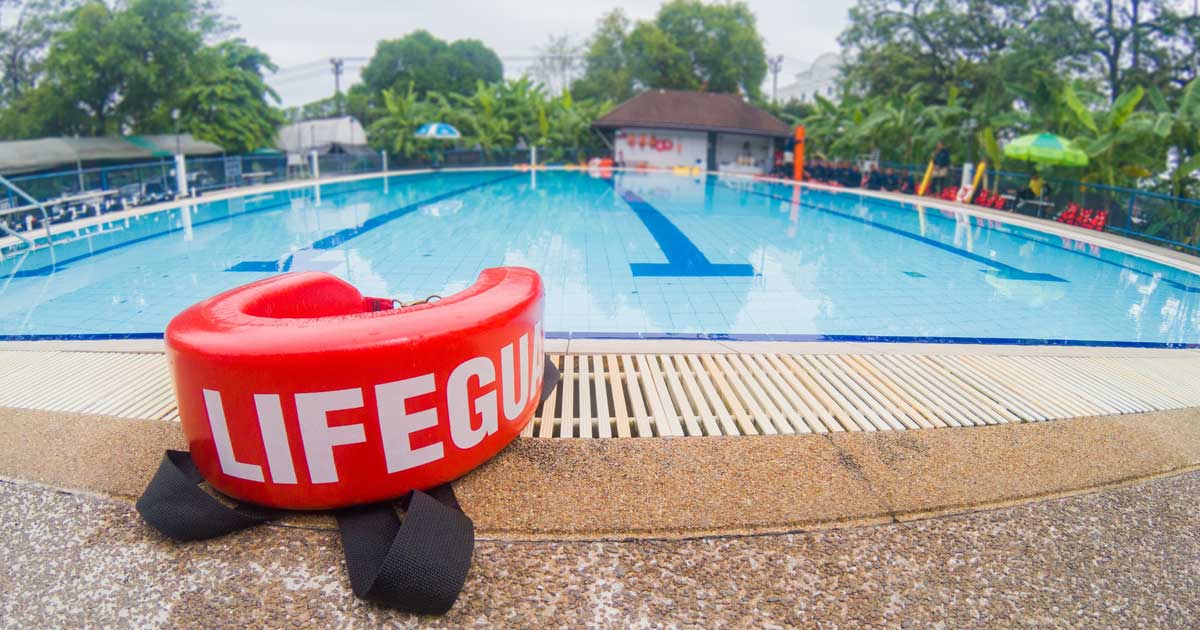
The lifeguard shortage in America is poised to have a significant impact on summer activities, potentially leading to the early closure of over 50% of public pools across the country. As families flock to beaches, pools, and water parks to beat the summer heat, the lack of lifeguards poses a threat to the safety and enjoyment of these recreational spaces.
While the demand for lifeguards has consistently exceeded supply in recent years, the current shortage is reaching unprecedented levels. In New York City, for example, even with a 9% pay increase and sign-on bonus, the city is still left with only one-third of the required lifeguards. This pattern is mirrored across the country, with states and municipalities reporting their worst lifeguard shortages on record.
What a Lifeguard Shortage Means For Swimmers
According to the American Lifeguard Association, approximately half of the nation’s 309,000 public pools will be forced to either close their doors or reduce their operating hours due to the lack of lifeguards. This statistic highlights the gravity of the situation and the widespread impact on communities’ access to safe swimming facilities.
Colorado is one state taking proactive measures to address the shortage. The state has allocated a series of grants aimed at rectifying the problem. For example, the YMCA in Johnstown, Colorado, received just over $10,000 to invest in training and recertification programs for lifeguards and lifeguard instructors. The goal is to attract and train more staff, especially in smaller communities where the pool of potential lifeguards is limited. These resources will help ensure that there are enough trained professionals to teach and safeguard swimmers.
The reasons behind the lifeguard shortage are multifaceted. Low salaries, a lack of qualified applicants, and rigorous testing procedures contribute to the challenge of hiring lifeguards. The American Lifeguard Association highlights that being a lifeguard is more than just a summer job. Lifeguards play a vital role in informing people about potential dangers and ensuring their safety in and around water. This level of responsibility requires individuals with the right qualifications, skills, and commitment.
The consequences of the lifeguard shortage extend beyond mere inconvenience. They pose serious risks to public safety, particularly as the summer season brings a surge in water-related activities. Drowning incidents can occur within seconds, emphasizing the urgency of having trained and vigilant lifeguards on duty.
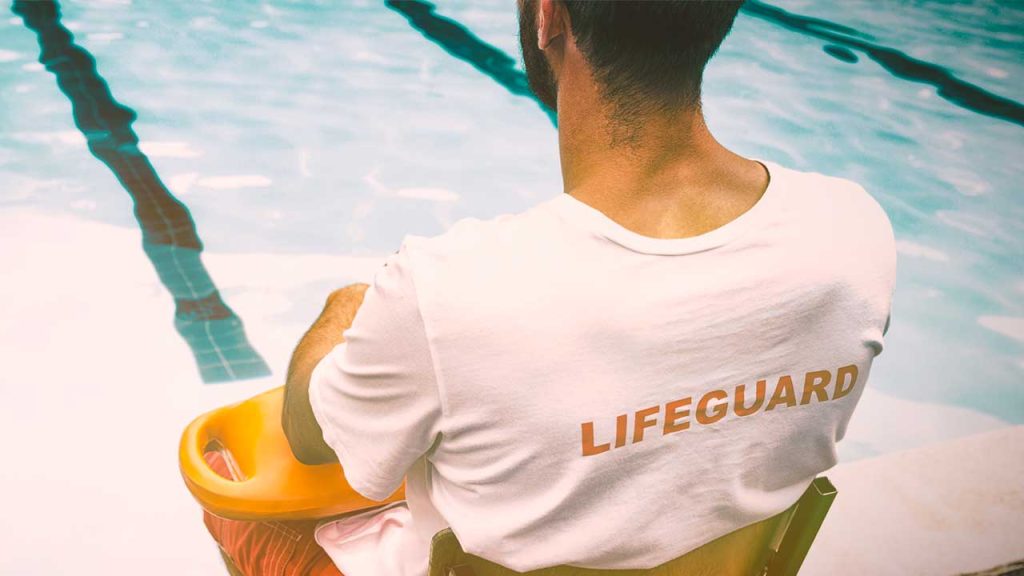
Why Lifeguards Are So Important
Lifeguards play a crucial role in preventing drownings and ensuring water safety. The following facts underscore the importance of lifeguards in safeguarding lives:
- Drowning Statistics: Each year, approximately 4,000 individuals in the United States lose their lives due to drowning. Drowning ranks as a leading cause of unintentional injury death across all age groups, and it is the second leading cause of unintentional injury death among children aged 1-14.
- Drowning Locations: The majority of drownings, ranging from 50% to 75%, occur in open water such as oceans, lakes, rivers, and ponds. However, swimming pools account for approximately 60% of drowning deaths among children.
- Lifeguard Efficacy: Various organizations, including the Centers for Disease Control and Prevention (CDC), recognize the effectiveness of lifeguards in preventing drownings and aquatic accidents. Communities and local government officials often seek evidence on the value of lifeguard services and their impact on public safety.
- Preventability of Drownings: Most drownings are preventable through multiple strategies, and the presence of lifeguards is one effective approach. By stationing lifeguards at public swimming areas and encouraging people to swim in those protected zones, the risk of drowning can be significantly reduced.
- Lifeguard Protection: Estimates suggest that the chance of drowning at a beach protected by lifeguards can be as low as one in 18 million. This statistic highlights the significant impact that trained and professional lifeguards have on drowning prevention in the United States.
- Water Watching & Supervision: Lifeguards provide critical water watching and supervision, as many drowning victims do not exhibit obvious signs of distress. Drowning often occurs quietly and quickly, with individuals unable to call out or signal for help. Children and adults can submerge in as little as 20-60 seconds. Lifeguards play a vital role in detecting these silent emergencies and intervening promptly.
- Deterrence of Risky Behaviors: The presence of lifeguards acts as a deterrent to behaviors that can put swimmers at risk of drowning. Just as increased police presence can deter crime, lifeguards discourage activities like horseplay or venturing into rough or deep water, thereby enhancing overall water safety.
To address this issue, concerted efforts are needed at various levels. Increasing salaries, offering attractive benefits, and providing opportunities for ongoing training and career advancement can help attract and retain lifeguards. Additionally, promoting lifeguard certification programs, raising awareness about the importance of water safety, and investing in community resources can contribute to a more sustainable lifeguard workforce.
As communities strive to enjoy the pleasures of water recreation, it is crucial to prioritize the safety and well-being of individuals. By recognizing the significance of lifeguards and taking active steps to address the shortage, we can ensure that swimming pools and other water facilities remain accessible and enjoyable for everyone during the summer months.
Pool News
Patent Pending Apple Watch SOS Feature Could Prevent Drownings
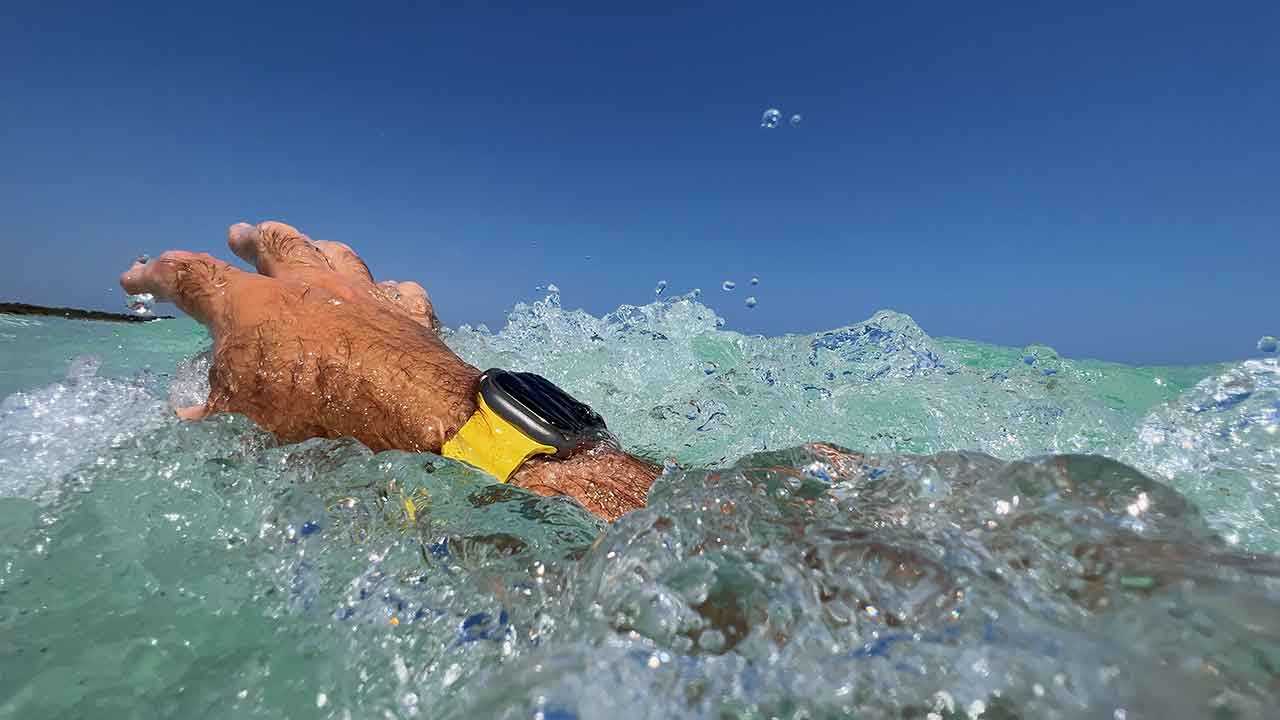
A forthcoming feature potentially destined for the Apple Watch, as detailed in a recent patent application, could serve as a lifesaver for swimmers at risk of drowning.
Outlined in the patent is a capability for the Watch to identify “irregular behavior” and automatically trigger a distress call for assistance.
Apple underscores the alarming statistics surrounding drowning, particularly its prevalence among children, as a leading cause of accidental fatalities.
In the United States alone, drowning claims the lives of over 3,500 individuals annually, ranking as the fifth most common form of accidental death. Tragically, a significant portion of these victims are children.
Emphasizing the critical importance of swift intervention during water emergencies, Apple highlights the dire consequences of prolonged submersion without resuscitation, which can result in brain damage and ultimately, drowning.
A Growing Need For Cost-Effective Wearable Solutions
While acknowledging existing underwater camera systems in some swimming pools aimed at detecting distressed swimmers and alerting lifeguards, Apple notes their costliness and unreliability.
Consequently, there’s a pressing need for a simpler, more cost-effective drowning prevention solution suitable for all types of water bodies, including public and private pools, as well as natural settings like lakes and ponds where installing underwater cameras is impractical.
The patent proposes leveraging wearable devices such as the Apple Watch for broader applicability, increased reliability, and the ability to detect various types of emergencies.
Alerting When Swimmers Are In Distress
For instance, if the Watch detects a wearer who is not proficient in swimming entering deeper water, it can promptly dispatch an alert instead of waiting for signs of distress.
These alerts can be transmitted to nearby devices, including those of friends and family, and seamlessly integrate with existing drowning detection and alarm systems to ensure lifeguards are promptly notified.
Apple Watches already boast capabilities to detect and respond to falls, vehicle accidents, and cardiac irregularities. Heartwarming testimonials featured in Apple’s “Dear Apple” video series show individuals whose lives were saved by these functionalities.
As with many patents from Apple, it’s important to note that not all concepts may materialize into actual products. Nonetheless, this innovation stands as a promising addition for potential integration into future watchOS updates.
Safety
Red Cross Releases Lifeguard VR Training Simulator
New Lifeguard VR Training app released by The American Red Cross provides enhanced surveillance and scanning training for lifeguards.

The American Red Cross has been a pioneer in water safety, aquatic science, certification, and instruction since 1914. Annually, its curriculum trains over 300,000 lifeguards, demonstrating its enduring commitment to ensuring the safety of swimmers.
Lifeguard VR Training: A Deeper Dive
Recently, The American Red Cross took a pioneering leap forward with the introduction of their new Virtual Reality (VR) lifeguard training simulator. This groundbreaking technology promises to transform the way lifeguards are trained, particularly in the crucial areas of surveillance and scanning skills, ultimately enhancing their ability to save lives.
At the recent Association of Aquatic Professionals (AOAP) show held in Reno, Pool Magazine had an opportunity to experience firsthand the innovative lifeguard training simulator developed by the American Red Cross in collaboration with Lucid Reality Labs. Chris Whipple, M.Ed., NREMT, a member of the Scientific Advisory Council of the American Red Cross, spoke about the significance of this technological advancement.
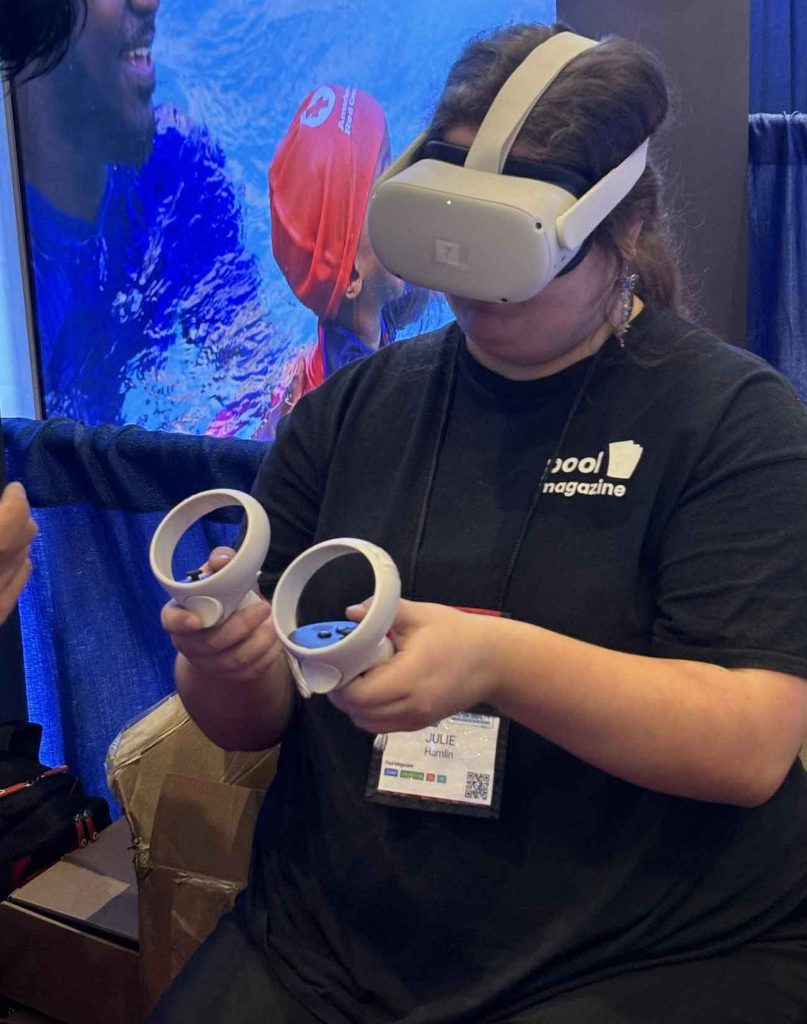
“The Red Cross, already the gold standard in water safety and drowning prevention, is enhancing lifeguard training for surveillance skills with the Lifeguard VR virtual reality tool,” stated Whipple, who explained how the tool will help provide effective scanning and surveillance skills that will assist them in identifying individuals in distress and help reinforce cognitive skills through immersive training scenarios.
How The Technology Works
Lifeguards can access the Lifeguard VR app, which offers a range of unique scenarios set in realistic aquatic environments, from the Meta Quest app store. The technology is compatible with all Meta Quest VR devices. In each scenario, lifeguards are placed on an elevated stand within their assigned zone and must swiftly identify individuals in need of assistance. By blowing a virtual whistle, they signal their recognition of the distressed person. Scores are calculated based on performance metrics that evaluate scanning and recognition abilities.
“The award-winning Lifeguard VR tool uses the best cutting-edge technology to ensure that lifeguards are at the top of their game, keeping facility patrons safe,” added Whipple.

Tackling Real-World Problems
This VR lifeguard training simulator is designed to replicate real-world scenarios with remarkable accuracy. It incorporates elements such as typical water behaviors, drowning behaviors, and the presence of other patrons or swimmers. Lifeguards are also challenged by obstacles like lane ropes and floating features, mirroring the complexities they face in actual pool environments.
Moreover, the Lifeguard VR app provides valuable performance metrics, allowing trainers to track progress and identify areas for improvement. Heatmap data on scanning patterns, along with quiz and identification metrics, offer valuable insights into lifeguard competency at various stages of training.
“Lifeguard Instructors and supervisors can now provide dynamic scenarios set in a realistic pool environment to analyze surveillance and scanning skills, recognition of drowning response, and support first aid skills,” explained Whipple.

By harnessing the power of virtual reality, the American Red Cross aims to revolutionize lifeguard training, ensuring that lifeguards are better equipped to respond effectively to emergencies. This innovative approach not only enhances learning outcomes but also offers a more engaging and accessible training experience for lifeguards.
As Whipple aptly summarized, “With the new Red Cross Lifeguard VR app, lifeguards can practice and hone their skills taught in the classroom. By immersing users in dynamic, realistic drowning scenarios, lifeguards are able to improve learning outcomes while learning in an engaging, modern, and accessible way.”
In an era where technology continues to reshape industries across the board, the integration of virtual reality into lifeguard training represents a significant step forward in ensuring water safety and drowning prevention. The American Red Cross’s commitment to innovation underscores their dedication to excellence in safeguarding aquatic environments and protecting lives.
Photo Credits: The American Red Cross
Pool News
Hotel Pool Had Numerous Violations in Case Where 8-Year-Old Was Pulled Into Pipe

In the wake of a heartbreaking incident at a hotel pool in northwest Houston, authorities are diligently investigating the circumstances surrounding the drowning of an 8-year-old girl. The incident occurred over the weekend and has sent shockwaves through the community.
Missing Girl Drowned in Hotel Pool According To Investigators
The young girl, identified by her family as Aliyah Lynette Jaico, was reported missing on Saturday evening around 6 p.m. The last sighting of her was near the lazy river-style pool at the DoubleTree by Hilton Houston Brookhollow located at 12801 Northwest Fwy. Despite frantic efforts by her family to locate her, including thorough searches of the pool area, Aliyah remained unaccounted for.
Tim Miller, the founder of Texas EquuSearch, revealed that security footage showed Aliyah entering the water but never resurfacing. This discovery prompted a comprehensive investigation into the pool’s infrastructure. Utilizing cameras affixed to long poles, authorities drained the pool to inspect its piping system.
What they uncovered was harrowing: Aliyah had been pulled approximately 20 feet into a pipe with a diameter of about 16 inches. Despite exhaustive efforts by the Houston Fire Department and emergency responders, it took nearly 13 hours to access the pipe and retrieve Aliyah’s lifeless body.
Further scrutiny into the hotel’s facilities revealed concerning findings. Reports from the Houston Health Department’s inspection conducted on Monday outlined multiple violations.
“Main drain document was provided and still valid. However small pool has 32-inch channel drains on the walls, without a valid document stating their function, date of installation and date of expiration. A full inspection was conducted, multiple violations were observed. Video footage is available, however manager stated that the footage is being reviewed by legal, and we would have to wait to receive a copy,” part of Monday’s report read.
Hotel Pool Had Numerous Violations
March 2024 Report
03-25-2024 Aquatic Facility Inspection Report by info on Scribd
June 2023 Report
06-06-2023 Aquatic Facility Inspection Report by info on Scribd
March 2023 Report
03-09-2023 Aquatic Facility Inspection Report by info on Scribd
September 2022 Report
09-15-2022 Aquatic Facility Inspection Report by info on Scribd
September 2021 Report
09-29-2021 Aquatic Facility Inspection Report by info on Scribd
As investigations continue, questions linger regarding the adequacy of safety measures at the hotel’s pool and the potential oversight in maintenance protocols. The loss of the young victim has cast a somber shadow over the community, prompting calls for enhanced vigilance and stringent adherence to safety standards to prevent such tragedies in the future.
Featured Photo Credit: Google Maps
-

 Pool News4 weeks ago
Pool News4 weeks agoLandslide Damages Homes, Destroys Swimming Pool in California
-

 Manufacturer2 weeks ago
Manufacturer2 weeks agoSRS Distribution Announces Next Phase of Growth by Combining with The Home Depot to Better Serve Professional Customers
-

 Pool News4 weeks ago
Pool News4 weeks agoFluidra Launches €20 Million Venture Capital Fund – Fluidra Ventures
-

 Cleaning and Service Equipment and Supplies2 weeks ago
Cleaning and Service Equipment and Supplies2 weeks agoRecent Leslie’s/Harris Poll Study Shows Nearly Three-Quarters of Americans Mistakenly Assume Clear Pool Water Is Clean, Swim-Safe Water
-

 Manufacturer4 weeks ago
Manufacturer4 weeks agoBofA Downgrades Latham Group Citing Weak Pool Construction Market
-

 Pool News2 weeks ago
Pool News2 weeks agoHotel Pool Had Numerous Violations in Case Where 8-Year-Old Was Pulled Into Pipe
-

 Pool News5 days ago
Pool News5 days agoEarthquake in Taiwan Causes Waterfall From Rooftop Pool
-

 Equipment Supplies3 weeks ago
Equipment Supplies3 weeks agoFWP Faces Class Action Lawsuit Stemming From 2023 Cyberattack









